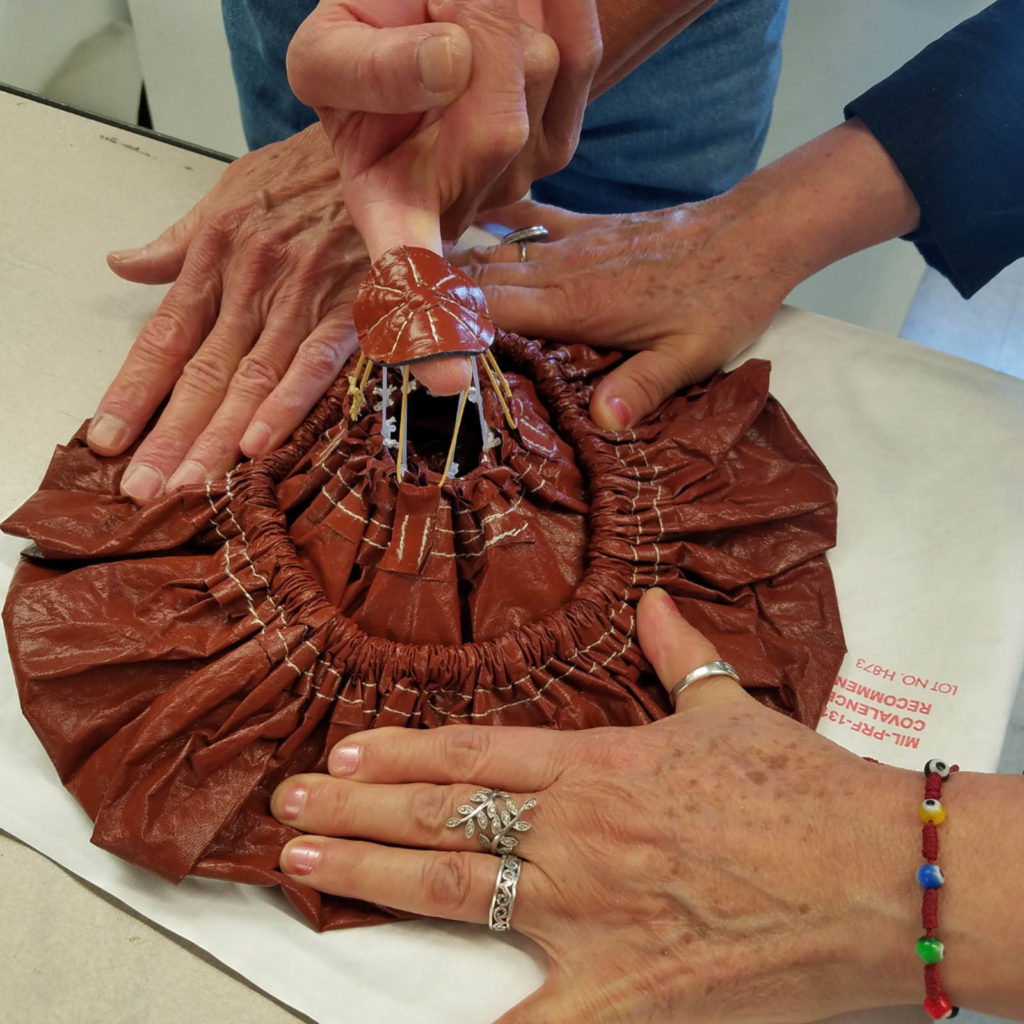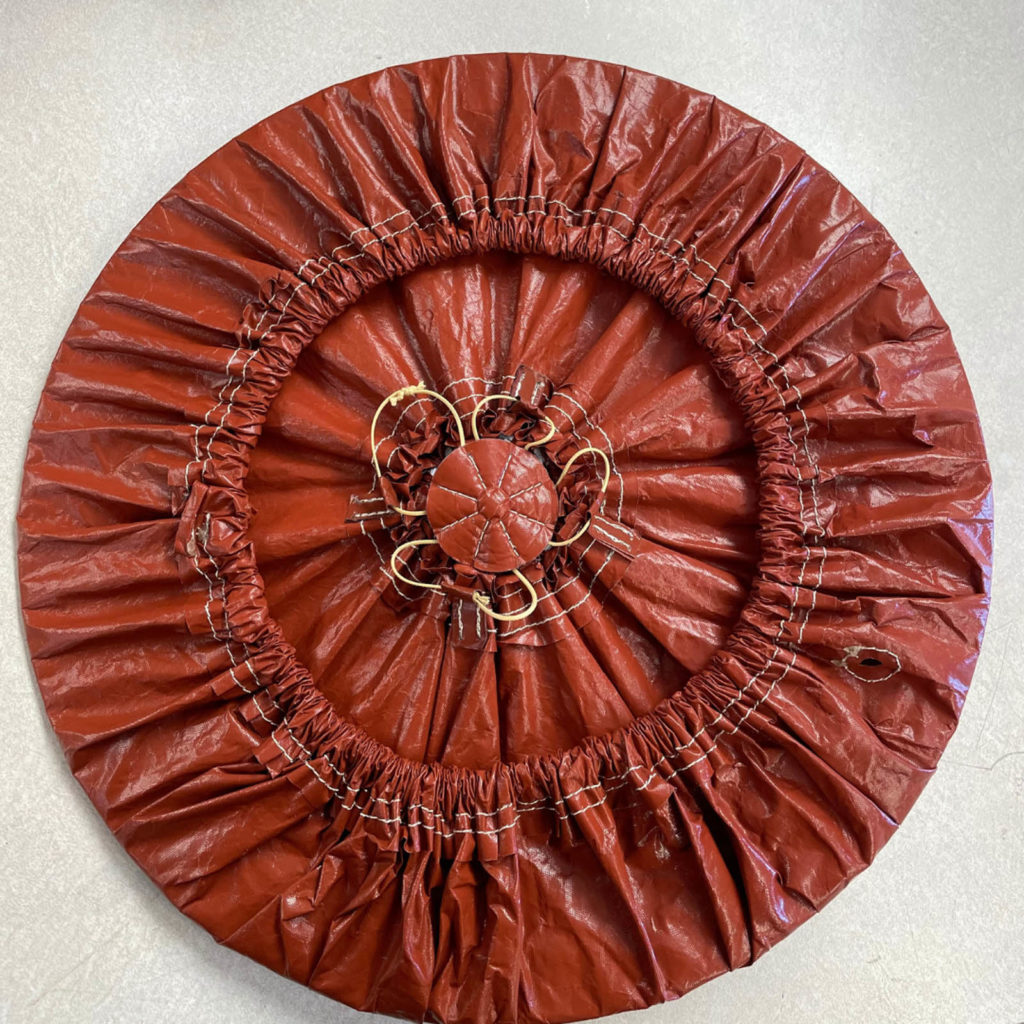
In seeking to promote growth in the textile industry, it’s important to identify value-driven markets that our capabilities, or core competencies, can address. Our inspirations concerning the industry come from different sources. Most recently, a blog post on this site, by Advanced Textiles Source editor Janet Preus, “You call that a textile?”, as well as Pulitzer Prize-winning Author Edmund Yong’s new book, “An Immense World“, both offer nontraditional perspectives—not just thinking “outside the box,” but building whole new boxes.
Our company, AR Tech (A&R Tarpaulins Inc., DBA AR Industries, AR Tech, Fontana, Calif.) has created “new boxes” with products using materials that for many years we thought of as “flexible composites. These materials were chosen because of a need to diversify and expand our markets into applications not traditionally addressed by our industry. But how could that be accomplished?
What is a bubble?
In his book, Yong discusses the concept of “Umwelt”, referring to living in environments, or “bubbles,” that limit our thinking, so that the “bubble” for us is all we know, and we think, mistakenly, that it’s all there is for us to know. But as he points out, there is so much in our universe that transcends all we know, and that we can pursue other perspectives through curiosity and imagination.
To apply Yong’s perspectives to our industry, and above all to allow the ability to diversify and expand our markets, a management culture with broader perspectives of what our products and capabilities can create is required, as well as fabricators who can master those creations. In other words, it’s necessary to escape the bubble we live in.
In seeking to grow our industry’s market potential, we need to identify materials that are useful in our value-driven pursuits. But these materials often will not conform to the tradition of what we think of as the materials used in our industry. (This is the basis for the “You call that a textile?” blog post.)

For example
Carl and Lisa Royce have created light forms in their company, Studio Lilica, based in Duarte, Calif., choosing lightweight materials used throughout the world to bring beauty to the companies and communities in which they have been installed. A unique breaking-of-the-mold approach is used to expand beyond their materials’ normal limitations to achieve this.
According to the company’s website, it “designs and builds light fixtures, mobile sculptures, and acoustic solutions from an artist’s point of view,” using fiberglass, acrylic, polycarbonate, aluminum, finished steel, 80 percent post-consumer recycled class A acoustic material, and inherently flame resistant fabric.
U.S, Rubber and Recycling, based in Colton, Calif., and headed by CEO and president Jeff Baldassari, would probably not identify in any way as a textile or fabric company; however, if we use the term “flexible composites,” it does describe how this company transforms tires into composite flexible floor mats for factories, gymnasia and to meet padding requirements in industrial applications.
As further testimony to thinking outside the norm, when faced with the labor shortages that have impacted our economy in general, Baldassari addressed the problem by making a strong commitment to hire previously incarcerated persons for his staff, thereby giving them a new opportunity they may not otherwise have had.
At AR Tech, it has been a part of the culture to identify what our future could be using both traditional and nontraditional materials in order to address existing and potential markets. These materials have included glass, ceramic or fiberglass, some have included silicone, some have included stainless steel, and all have been flexible.
For that reason, we have not only pursued products and service that can be identified as traditional, but also unique opportunities for ultra-high and ultra-low temperature insulation products, acoustical mitigation products, hydraulic leakage bellows systems, electromagnetic, static dissipative and conductive products. These and others may not fit industry concepts of “traditional,” but they do fit the company’s cultural concept of fabricating products from flexible composite materials.
An idea for applying traditional materials to address non-traditional requirements came to our company when the U.S. Navy needed flexible Hawse Pipes for mine sweepers. The requirement included the criteria that it was to be constructed to ensure that no water entered the electronic equipment inside the Hawse pipes, and that the pipes retracted to at least 10 inches and extended to a length of 12 feet. These are arduous requirements.
The solution involved creating bellows out of 18-ounce-per-square-yard, vinyl-coated material, that were sewn using Kevlar thread. The sewing lines were then sealed with hot air guns, using the same 18-ounce material, the Kevlar having the ability to withstand the heat needed to seal over the stitching. The end result exceeded the requirements, with bellows that retracted to seven inches and extended to 14 feet. With thorough testing, it could be ensured that no water leaked through the assembly.
The companies whose examples are represented here show a business mindset that accepts curiosity and imagination and a culture that includes acceptance to pursue markets that are beyond an industry’s bubble. The staff capable of executing the creative approaches is also required, as well as the commitment to sustain those attributes. This offers an answer to Preus’ provocative question, but also provides the answer to how our industry members can adapt to that answer.
Bud Weisbart is vice president and co-owner of A&R Tarpaulins Inc., DBA AR Industries, AR Tech, headquartered in Fontana, Calif.
 TEXTILES.ORG
TEXTILES.ORG


